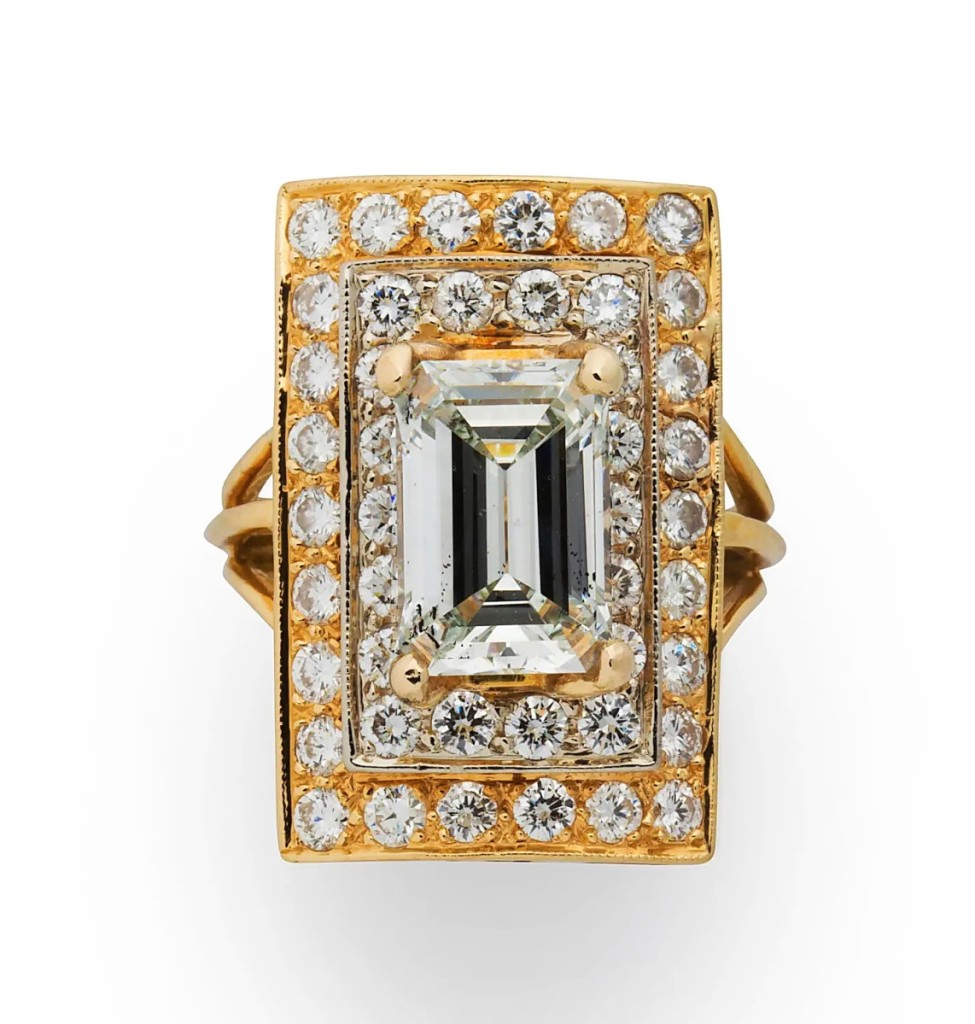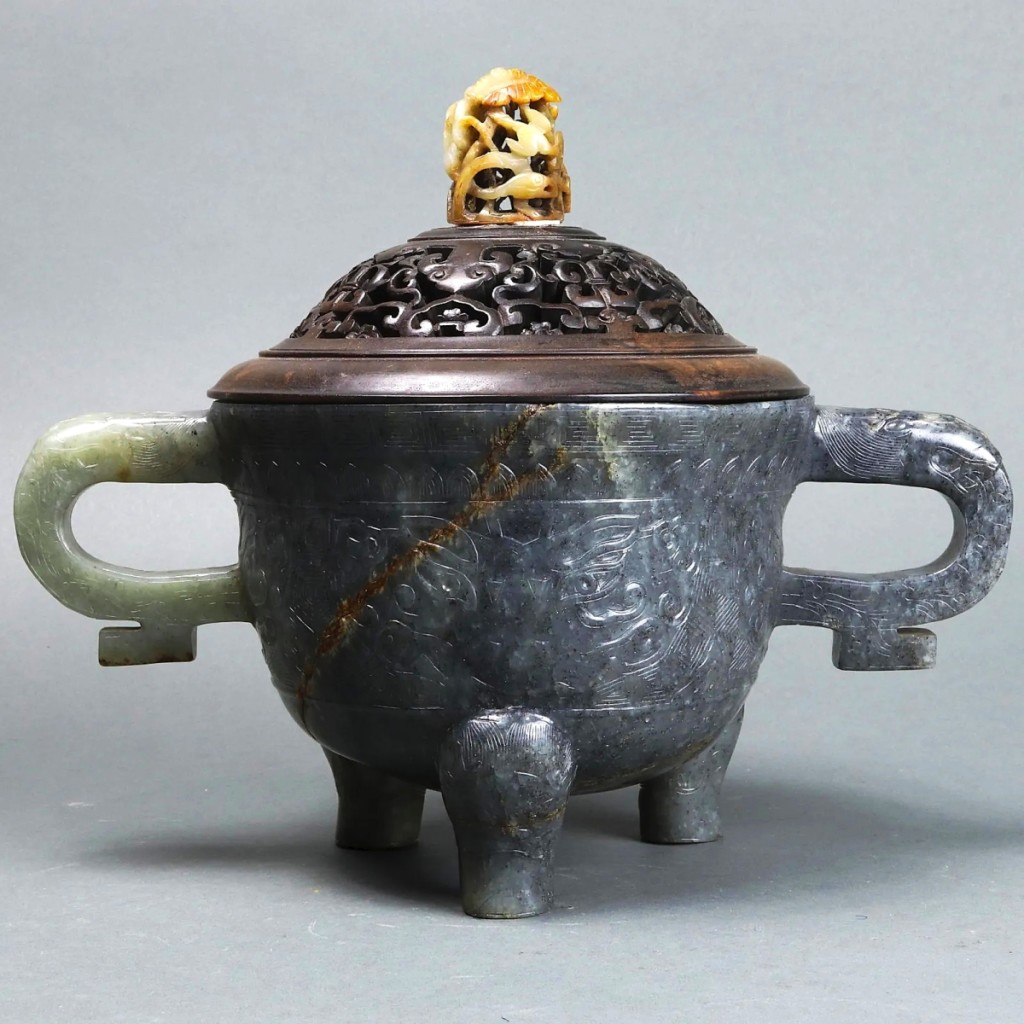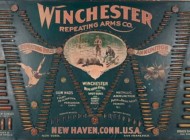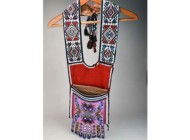
The top lot of the three days was Charles Schulz’s original ink on paper illustration for a December 1972 strip of “Peanuts.” The strip, titled “Happy Beethoven’s Birthday,” sold for $43,750.
Review by Greg Smith, Photos Courtesy Clars Auction Gallery
OAKLAND, CALIF. – Clars Auction Gallery finished out 2021 with a three-day jewelry, furniture, decorative art, fine art paintings, prints and photos sale December 16, 18 and 19.
The bulk of the sale’s $1.35 million total gross was on its first day, December 16, when the jewelry was offered.
“We’re very pleased with our jewelry department,” Clars chief executive officer and president Rick Unruh said. “Lauren Della Croce doubled sales in the jewelry department this year.”
Unruh said he had a number of buyers clambering to get gifts in preparation for the upcoming holiday.
“There was certainly more emotion in that sale,” he said. “They probably spent a little more than they wanted to.”
Money well spent, regardless. The top lot of that day was a 14K gold ring centered with a 3.38-carat emerald-cut diamond in I color and VS1 clarity. The ring would sell above estimate for $34,375. A pair of 18K white gold earrings with clusters of spear-shaped briolette-cut diamonds would take $8,750.
Jewelry from the Victorian and Edwardian age was coveted. A Victorian colored diamond brooch in the form of a horseshoe was set with graduated old mine-cut stones and sold for $9,375. A pair of Victorian earrings in the form of a silver-topped pear-shaped drop featured oval-cut rubies on a rose-cut diamond ground. The pair sold for $8,750. Nature was more evident in the designs of the Edwardian age works on offer. At $6,250 was a butterfly brooch with a pear-shaped rose-cut diamond head, a cushion-cut pink sapphire abdomen and a thorax accented by step-cut emeralds, all flanked by a pair of rose-cut diamond and ruby set wings. Just behind at $5,938 was a brooch that resembled a snowflake with diamonds, step-cut emeralds and seed pearls.

A 3.38-carat emerald-cut diamond in I color and VS1 clarity centered this 14K gold ring, which sold above estimate for $34,375.
The overall auction was led at $43,750 by an original illustration ink on paper “Peanuts” strip by Charles Schulz. The work, titled “Happy Beethoven’s Birthday,” features Lucy flexing her composer knowledge to solicit a kiss from piano-playing Schroeder – she was unsuccessful. Beethoven’s birthday is listed only as December 1770 – Schulz released the strip in December of 1972, 202 years following the composer’s birth. It came to sale in the same month 251 years following his birthday.
“I think there’s a scarcity issue with those so you’re seeing the prices rise,” Unruh said. “They used to sell for $10,000.”
Selling for $34,375 was Gertrude Abercrombie’s “Shell and Leaf,” a 1958 still life created in oil on Masonite and measuring 11¾ inches square. Abercrombie revisited this motif in 1958, a time generally understood to be the beginning of her decline following a period of more prolific creation in the 1940s and early 1950s. The artist developed health and financial issues, which led her into reclusiveness in the 1960s. The shell and leaf depicted in this image is similar to a series she seemingly began in 1953 – all feature a leaf pinned to the back wall of the vignette. An example of a snail and caterpillar before three leaves pinned to a wall is in the collection of the Art Institute of Chicago. The present example is unique in the use of a spiraling conch shell, which doesn’t seem to appear in any of the others.
The cool beauty of Texas’ native bluebonnets was on exhibit in two paintings by artists who have both laid a significant claim to the subject. The earlier is by Robert Wood, who lived in San Antonio from 1924 to 1941 and studied with Jose Arpa. He would move to the art colony of Laguna Beach in 1941, but would return to visit family and paint the blue lupin in their spring bloom. His “May Time,” an oil on canvas of 8 by 10 inches, sold for $6,250. The later work was by William Slaughter, who was born in San Antonio and would have been only 18 years old by the time Wood moved to California. Slaughter came to painting later in life, a self-taught artist who earned his first award in 1968. He, too, was captivated by the bluebonnet bloom and featured it in many of his works. His “Country Church,” a 20-by-24-inch oil on canvas, sold for $8,125.
In Asian art, a good result was found for a Chinese jade tripod censer with associated jade finial that sold for $13,750. The censer featured all-over incising with a pair of looping handles with a celadon and russet jade finial carved in openwork to depict geese in a lotus pond. It had come from the estate of Patricia Moffat Pope, who together with her husband George A. Pope Jr, built a horse racing empire that bred 27 stakes winners. Clars has locked down the Pope estate and will be offering it throughout the coming year. Also from the Popes was a Chinese cloisonne enamel and hardwood ice chest that sold for $5,937. “I’ve never seen one of those before,” Unruh said. “When I visited the house, you saw it when you came in and it was always impressive.” A pair of Chinese famille rose garden seats brought $2,813.
John Louis Clarke (1881-1970) carved out a name for himself in Montana. At only 2 years old, the would-be-artist caught scarlet fever, rendering him deaf and five of his brothers dead. In what is now East Glacier, Mont., Clarke opened an art studio where he sold his carvings. His mother was the daughter of a Blackfeet Chief and he identified with the tribe throughout his life, also advertising for sale Navajo goods, paintings and Indian Curios. Clarke earned such a reputation that President Warren G. Harding displayed his carved eagle in the Oval Office. Among his favorite subjects were goats and bears, the latter appearing on a 10-inch-high lamp base that sold for $3,438.
“We had a fairly good year,” Unruh concluded. “We did better than last year and we’re optimistic about the next. We’ve got some great consignments in the pipeline.”
All prices reported include the buyer’s premium. For more information, www.clars.com or 510-428-0100.










.jpg)









